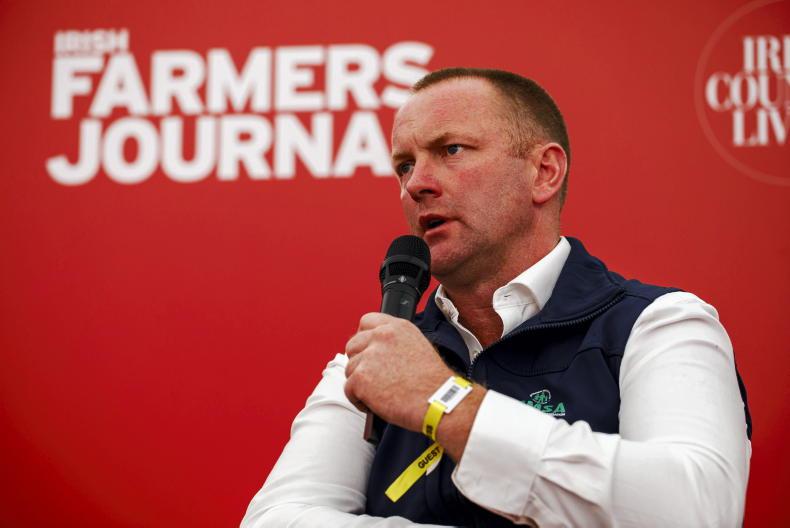Being in debt is something many of us are familiar with, and at certain times in our lives, the burden of repayments and loans hanging over your head can be a heavy weight to bear.
By breaking down the process of debt repayment into smaller steps, it can make things seem a bit more manageable. Start off small and make gradual progress; starting with these five easy steps.
1 Assess your debt
To know where you’re going, you need to know where you are currently, so the first step is to assess your situation. You will need to understand how much debt you owe, who you owe it to and what the interest rates involved are.
Once you have clarity on the situation, you can then work towards developing a strategy to clear your debts. Seeing your debts in a visual format can help you with this. Try using a spreadsheet or even a pen and pad to map out your debt and what needs to be repaid.
2 Create a budget
Next up, it’s time to create a budget. To do this, allocate your income to different categories such as your mortgage or rent, food, clothing, utilities and other monthly necessities. Then, note how much you plan to put into your pension and long-term savings.
Once you have done this, the amount that is left over is your disposable income. How much of this can you allocate to paying off your debt? Make sure that this repayment figure is an achievable one.
Budgeting will help you to stay on track and ensure that you keep up with your debt repayments. If you need help tracking your spending, try out a budgeting tool or app on your smart phone – there are many free apps out there to help you.
3 Choose a debt repayment strategy
When it comes to your debt repayment plan, it’s crucial that you choose one that is right for you and your lifestyle. There are two popular strategies that people tend to use: the ‘snowball’ method and the ‘avalanche’ method.
The snowball method involves paying off debts from smallest to largest, irrespective of the interest rates involved. Take the proportion of disposable income discussed above and pay on top of the minimum repayment to clear the debt faster. Clearing smaller debts first can provide you with the motivation that you need to work towards clearing the larger ones.
The avalanche method involves paying off debts with the highest interest rates first. This can save you money over time, but requires discipline, as high-interest debts can often be larger debts. Keep this in mind when choosing a strategy.
4 Increase your income and lower your expenses
Explore new ways to earn more money such as participating in markets, organising farm tours or selling farm produce online. Before pursuing any new ventures, it’s essential that you conduct market research, assess the feasibility of the ideas and consider your existing resources and expertise.
At the same time, you will also need to decrease your outgoings, so cut back on unnecessary expenses where you can. Any extra money should be directed straight back into debt repayments.
5 Stay committed and consistent
Remember, becoming debt-free is a journey that requires time and patience. Avoid setting yourself up for failure by setting achievable debt repayment goals and milestones. It’s important to celebrate small victories along the way to keep yourself motivated.
If you still find yourself facing a challenge in clearing your debts, then it might be time to reach out to a professional to seek advice and assistance.
A financial advisor can assess your overall financial situation, including your income, expenses, assets, and debts. They can help you develop a personalised debt repayment strategy and provide advice on improving your financial health.
Founder and managing director of Rethink Money, Sean McNulty’s journey in the financial industry has been shaped by a passion for innovation and a desire to simplify financial planning for everyone. Check out rethinkmoney.ie.
Read more
Protecting older adults from financial abuse
Finance: thinking of investing a lump sum of money?
Being in debt is something many of us are familiar with, and at certain times in our lives, the burden of repayments and loans hanging over your head can be a heavy weight to bear.
By breaking down the process of debt repayment into smaller steps, it can make things seem a bit more manageable. Start off small and make gradual progress; starting with these five easy steps.
1 Assess your debt
To know where you’re going, you need to know where you are currently, so the first step is to assess your situation. You will need to understand how much debt you owe, who you owe it to and what the interest rates involved are.
Once you have clarity on the situation, you can then work towards developing a strategy to clear your debts. Seeing your debts in a visual format can help you with this. Try using a spreadsheet or even a pen and pad to map out your debt and what needs to be repaid.
2 Create a budget
Next up, it’s time to create a budget. To do this, allocate your income to different categories such as your mortgage or rent, food, clothing, utilities and other monthly necessities. Then, note how much you plan to put into your pension and long-term savings.
Once you have done this, the amount that is left over is your disposable income. How much of this can you allocate to paying off your debt? Make sure that this repayment figure is an achievable one.
Budgeting will help you to stay on track and ensure that you keep up with your debt repayments. If you need help tracking your spending, try out a budgeting tool or app on your smart phone – there are many free apps out there to help you.
3 Choose a debt repayment strategy
When it comes to your debt repayment plan, it’s crucial that you choose one that is right for you and your lifestyle. There are two popular strategies that people tend to use: the ‘snowball’ method and the ‘avalanche’ method.
The snowball method involves paying off debts from smallest to largest, irrespective of the interest rates involved. Take the proportion of disposable income discussed above and pay on top of the minimum repayment to clear the debt faster. Clearing smaller debts first can provide you with the motivation that you need to work towards clearing the larger ones.
The avalanche method involves paying off debts with the highest interest rates first. This can save you money over time, but requires discipline, as high-interest debts can often be larger debts. Keep this in mind when choosing a strategy.
4 Increase your income and lower your expenses
Explore new ways to earn more money such as participating in markets, organising farm tours or selling farm produce online. Before pursuing any new ventures, it’s essential that you conduct market research, assess the feasibility of the ideas and consider your existing resources and expertise.
At the same time, you will also need to decrease your outgoings, so cut back on unnecessary expenses where you can. Any extra money should be directed straight back into debt repayments.
5 Stay committed and consistent
Remember, becoming debt-free is a journey that requires time and patience. Avoid setting yourself up for failure by setting achievable debt repayment goals and milestones. It’s important to celebrate small victories along the way to keep yourself motivated.
If you still find yourself facing a challenge in clearing your debts, then it might be time to reach out to a professional to seek advice and assistance.
A financial advisor can assess your overall financial situation, including your income, expenses, assets, and debts. They can help you develop a personalised debt repayment strategy and provide advice on improving your financial health.
Founder and managing director of Rethink Money, Sean McNulty’s journey in the financial industry has been shaped by a passion for innovation and a desire to simplify financial planning for everyone. Check out rethinkmoney.ie.
Read more
Protecting older adults from financial abuse
Finance: thinking of investing a lump sum of money?











SHARING OPTIONS